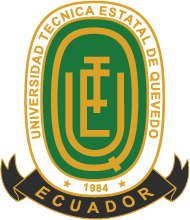USEFUL PLANTS IN THE TRADITIONAL AGROFORESTRY SYSTEMS FROM THE ECUADORIAN COAST
DOI:
https://doi.org/10.18779/cyt.v1i2.73Keywords:
TRADITIONAL USE, ETHNOBOTANIC, INVENTORY, AGROFORESTRY SYSTEMS.Abstract
The study was carried out in the Middle Basin of the Río Guayas, Ecuador, in the area corresponding to the cantons Mocache and Palenque. The inventory of the species was realized by participative journeys. The species were classified according to the Cronquist Filogenetics System. The data about the use of the species were obtained by chats and non formal interviews. It was determined that the farmers from the Middle Basin of the Río Guayas know and they use 262 vegetable species that belong to 67 families and 164 genuses. The most common vegetable families were: Anacardiaceae, Papilonaceae, Solanaceae, Rutaceae, Musaceae and Lamiaceae, with more than ten species each one. Some 21 types of uses were documented, of which the most important are: nutritious, medicinal and construction, which demonstrates the concern of the families to satisfy their basic necessities. Most of the used species are trees, followed by grasses and bushes. Among the species of major importance for the multiple uses and products that are obtained are: Persea americana Mill. (aguacate), Artocarpus altilis Fosberg (fruta de pan), Musa sp. (plátano), Manguifera sp. (mango), Phythelephas aequatoriales Spruce (cade), Inga edulis Matius (guaba de bejuco), between others.
Downloads
Downloads
Published
How to Cite
Issue
Section
License

This work is licensed under a Creative Commons Attribution-NonCommercial-ShareAlike 4.0 International License.
Licensing Agreement
This journal provides free access to its content through its website following the principle that making research available free of charge to the public supports a larger exchange of global knowledge.
Web content of the journal is distributed under a Attribution-NonCommercial-ShareAlike 4.0 International.
Authors may adopt other non-exclusive license agreements for the distribution of the version of the published work, provided that the initial publication in this journal is indicated. Authors are allowed and recommended to disseminate their work through the internet before and during the submission process, which can produce interesting exchanges and increase citations of the published work.












